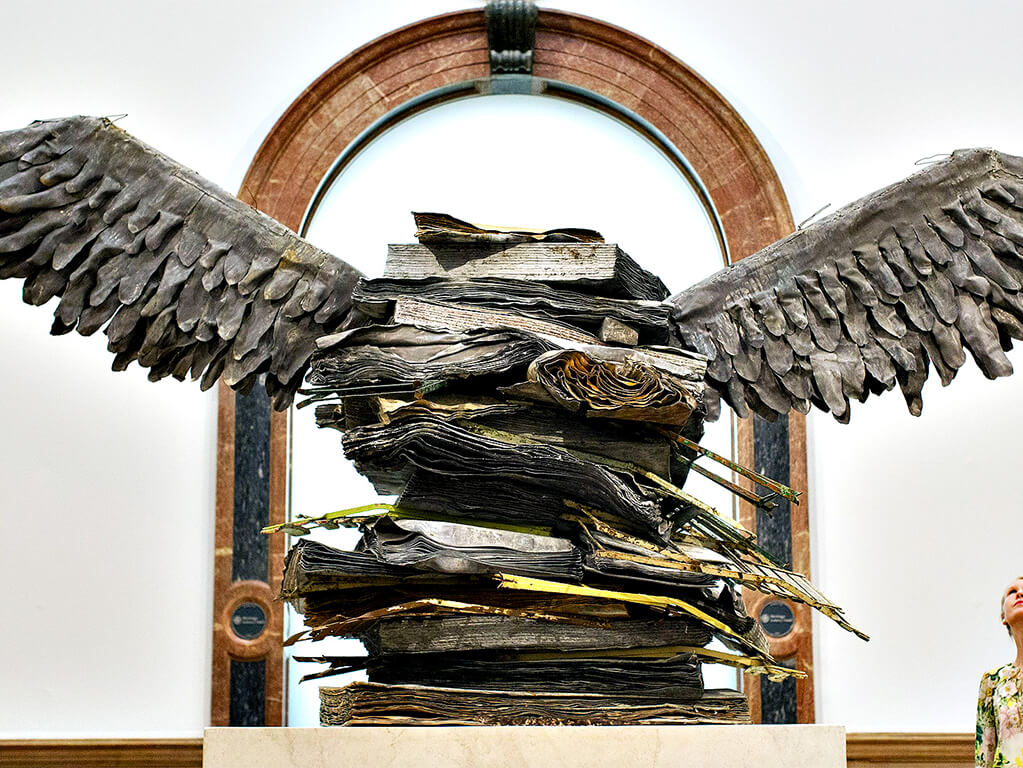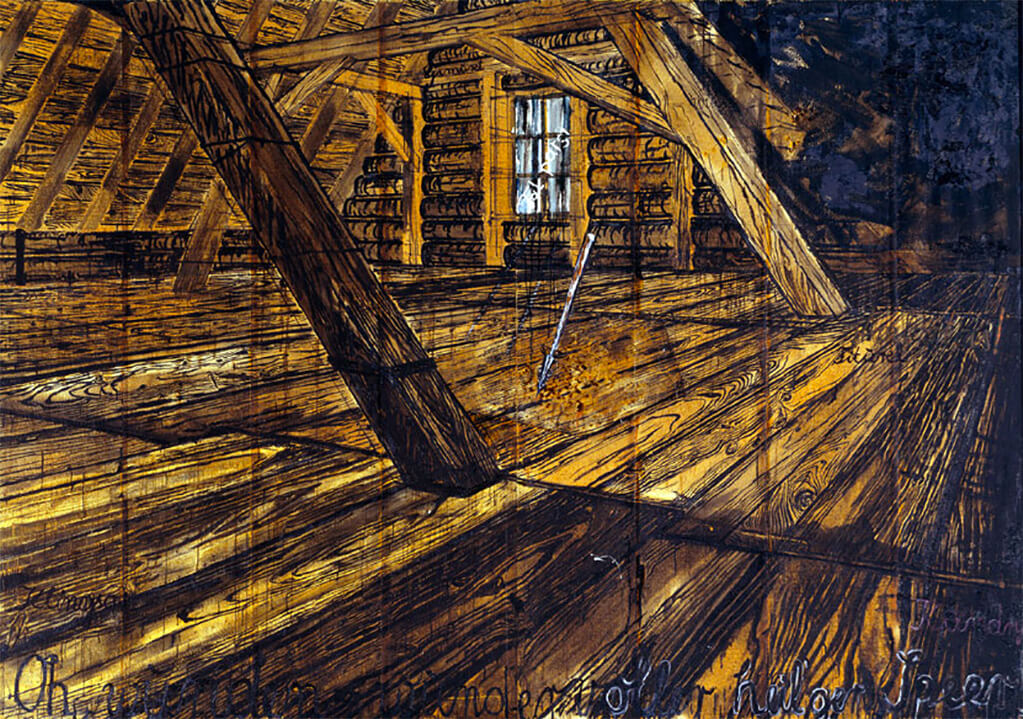When he is good he is very, very good, but, my word, does he over-egg the pudding.
And so, I finally come to write of Anselm Kiefer, and with something of a heavy heart, as heavy, I’d vouch, as one of his load-bearing canvases.
In 2007, I was left breathless by the German artist’s new paintings at the White Cube gallery in Mayfair: huge, spectacular churned-up poppy fields, whose sweetly blushing poppy heads were drooping from blackened stalks erupting from deeply encrusted, scorched, scraped and furrowed earth. To make such grand statements about the piteous nature of war, about the recklessness and hubris of humanity, about the hope that only rarely deserts us, and not to cheapen any of it by obvious sentiment or bombast, was, I felt, an impressive achievement. And they were staggeringly beautiful paintings.
Then, with the opening of White Cube Bermondsey in 2011, I went along to just about the biggest show Kiefer had had in the UK to date. This was also impressive. Massive paintings – I had never seen such massive paintings – of Berlin’s defunct Tempelhof airport: brooding, faintly malevolent, impotent. The airport had been built by Ernst Sagebiel in the Thirties on land once owned by the medieval Knights Templars. With the rise of the Nazis, it was to be refashioned by Albert Speer as the international gateway to Germania under the thousand-year Reich. Like everything Kiefer does, and has been doing for the past four decades – he was born in 1945, in the Black Forest, just two months before Germany’s surrender – these awe-inspiring paintings were heavy with German history. Encountering them was like finally getting what Stendhal must have meant when he outlined the physical symptoms of his art attack.
But I don’t want to get too rhapsodic. Kiefer’s Wagnerian symphonies in paint – and lead and bitumen and drooping, desiccated flora, and now, like Damien Hirst, even diamonds – can also be undeniably tone deaf. And in that last London show, the line between the sublime and the faintly ridiculous was crossed several times. Burdened by all that symbolism, creaking with all that mythology – his infatuation with Norse mythology to the fore, and, indeed, with Wagner himself – and preoccupied by the esoteric and the occult (he’s got a thing for alchemy, particularly the mystic, transmutational properties of lead), one almost expects the work to emerge from a puff of smoke it’s that theatrically hammy. Who will deny his terribly tendency for the overblown?
Walking round the RA show, I feel this more than ever. Too often I’m reminded of Julian Schnabel, a terrible artist, a sticker of objects on canvas, and a fellow Neo-Expressionist painter (in America, it was called New Image painting), who, like the older Kiefer, rose to international prominence at the end of the Seventies and early Eighties. Schnabel is not a good artist to think about when confronted by the cataclysms of the 20th century, but once he creeps in, he just won’t go away. He’s not only there in the bits of heavy paint furniture, but in the shared sensibility. And if Kiefer’s work is not quite hairy and chest-thumping enough, then they can be at least as bombastic and over-egged. And we don’t even have any of those wildly beautiful poppy paintings to offset that impression.
But wait, it won’t do to get too carried away in that direction either. Kiefer is a better artist than Schnabel could ever be, and we certainly get tantalising glimpses of how much better here. An exquisite, glass-encased triptych, part sculpture, part painting, and featuring his tumbling “fall of the 1000-year Reich” concrete towers, a mini replica of the two toppling towers made for the RA’s forecourt a few years ago, and a walk-through woodcut print of a wooded and mysterious landscape (with references to Dürer) at the exhibition’s end, are two very powerful and evocative highlights – and woodcut prints have such a powerful presence in German art that it feels more than fitting to be enveloped in one before you depart on your journey home.
Earlier paintings find Kiefer confronting the nation’s collective guilt with painted self-portraits doing Nazi salutes in his father’s wartime officer’s uniform. Soon we are deep in the Teutonic forest, with the forest bed thick with ice and snow and blood. His Parsifal triptych depicts a bare wooden attic (Kiefer’s studio at the time) in which we find an infant’s cot, a big sword embedded in the floorboards, and finally an embedded sword with a second sword lying broken. Above the two embedded swords, Kiefer has dramatically scrawled the name “Parsifal”. If it hadn’t already started falling apart for me, this is the point where it snaps – my mind drifts to bad illustrations of the legend of the Holy Grail and medieval gaming fantasies. If you weren’t already put off by the theatrical grandiosity of the giant eagle’s wings rising over ancient tomes in the foyer, then here you’re in for a treat.
When Kiefer is good, he is undoubtedly very, very good. And his ambitions are not small, so he confronts big and serious and important subjects. This gives him leverage, so that the suggestible viewer might be cudgelled into thinking how important and powerful his work is. But when you see so much of his bad work, and all those decades of it all in one go, the overriding sense is just how hammy it is and how phoney it feels.

